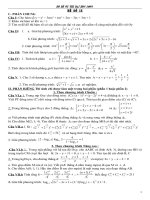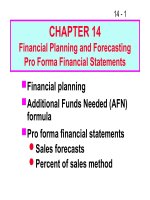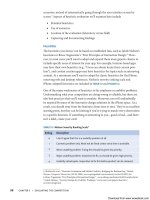Iphone 14 pro per 2022
Bạn đang xem bản rút gọn của tài liệu. Xem và tải ngay bản đầy đủ của tài liệu tại đây (7.45 MB, 9 trang )
<span class="text_page_counter">Trang 1</span><div class="page_container" data-page="1">
<b>Product Environmental Report </b>
recycled gold in the wire of all cameras
<b>100% </b>
We’re committed to transitioning our entire manufacturing supply chain to 100 percent
renewable electricity by 2030.
<b>Energy efficient 54% </b>
less energy consumed than the U.S. Department of Energy requirements for
battery charger systems
<b>Apple Trade In </b>
Return your device through Apple Trade In, and we’ll give it
a new life or recycle it for free.
<b>Responsible packaging100% </b>
of the wood fiber comes from recycled
and responsible sources
<b>100% recycled gold in the wire of all cameras and in the plating of multiple printed circuit boards</b>
recycled rare earth elements in all magnets
</div><span class="text_page_counter">Trang 2</span><div class="page_container" data-page="2"><b>Taking responsibility for </b>
<b>our products at every stage </b>
We take responsibility for our products throughout their life cycles—including the materials they are made of, the people who assemble them, and how they are recycled at end of life. And we focus on the areas where we can make the biggest difference for our planet: reducing our impact on climate change, conserving important resources, and using safer materials.
<b>We sell millions of products. So making even small </b>
<b>adjustments can have a </b>
We continue to make progress in reducing Apple’s contribution to climate change—by focusing on making energy-efficient products with renewable or recycled materials and with renewable energy. Suppliers’ use of renewable energy through our Supplier Clean Energy Program helped drive down the carbon footprint by nearly 6 percent compared to the previous generation.
<small>4 </small>Apple is committed to using carbon life cycle assessments to identify opportunities to drive down product greenhouse gas emissions.
</div><span class="text_page_counter">Trang 3</span><div class="page_container" data-page="3"><b>Source Materials </b>
The wires of all cameras are made with 100% recycled gold.
To conserve important resources, we work to reduce the material we use and aim to one day source only recycled or renewable materials in our products. And as we make this transition, we remain committed to the responsible sourcing of primary materials. We map many materials, some to the mineral source, and establish the strictest standards for smelters and refiners. Apple also requires 100 percent of identified tin, tantalum, tungsten, gold, cobalt, and lithium smelters and refiners to participate in third-party audits.
<small>5 </small>We’re proud to be recognized as a worldwide leader in the responsible sourcing of minerals in our products. Our product designs also consider the safety of those who make, use, and recycle our products, restricting the use of hundreds of harmful substances. Our standards go beyond what’s required by law to protect people and
iPhone 14 Pro is free of harmful substances like beryllium, brominated flame retardants, PVC, phthalates, arsenic in the glass, and mercury.
<small>1</small>And 100 percent of the materials in iPhone 14 Pro are covered by our Regulated Substances Specification. We go beyond what’s required by aiming to understand the non-regulated substances in every part of every product—an effort that requires an industry-leading level of transparency through the entire supply chain. We consistently identify the makeup of over 75 percent by mass of iPhone devices.
<b>Rare earth elements </b>
We use 100 percent recycled rare earth elements in all magnets, representing 100 percent of the total rare earth elements in the device.
<small>6</small><b>Tin </b>
We use 100 percent recycled tin in the solder of multiple printed circuit boards, including the main logic board.
<b>Tungsten </b>
We use 100 percent recycled tungsten in the Taptic Engine. This represents 99 percent of the total tungsten in the device.
<b>Gold </b>
Apple is pioneering industry-leading levels of traceability in recycled materials to build a gold supply chain of exclusively recycled content. We’re now using 100 percent recycled gold in the wire of all cameras and the plating of multiple printed circuit boards.
<b>Plastic </b>
We’re transitioning from fossil fuel–based plastics to those made from renewable or recycled sources. For iPhone 14 Pro, we use 35 percent or more recycled plastic in 15 components.
</div><span class="text_page_counter">Trang 4</span><div class="page_container" data-page="4"><b>Make </b>
The Apple Supplier Code of Conduct sets strict standards for the protection of people in our supply chain and the planet that we all share. Every year, we assess our suppliers’ performance in upholding the standards required by our Code.
We work closely with our suppliers to provide safe and healthy workplaces where people are treated with dignity and respect, and to reduce suppliers’ environmental impact. Our requirements apply across our supply chain and include the responsible sourcing of materials. From the strong foundation set by our Code, we go further—from helping suppliers transition to renewable energy, to providing educational opportunities for their employees, to supporting final assembly suppliers in reducing waste.
All established iPhone 14 Pro final assembly supplier sites use safer cleaners and degreasers in their manufacturing processes, as determined by methodologies like the GreenScreen<small>®</small> assessment.<small>7</small>
<b>Zero Waste to Landfill </b>
No established iPhone 14 Pro final assembly supplier sites generate any waste sent to landfill.<small>8</small>
<b>Supplier energy use </b>
All iPhone 14 Pro final assembly supplier sites are transitioning to 100 percent renewable energy for Apple production.
</div><span class="text_page_counter">Trang 5</span><div class="page_container" data-page="5">of the virgin wood fiber in the packaging comes from responsibly
<b>Package and Ship </b>
iPhone 14 Pro packaging does not use outer plastic wrap.9 This brings us one step closer to our goal of completely removing plastic from all our packaging by 2025.
To improve our packaging, we are working to eliminate plastics, increase recycled content, and use less packaging overall. All of the wood fiber in our packaging is either recycled or comes from responsibly managed forests.
<small>10</small>And we have protected or created enough responsibly managed forests to cover all the virgin wood fiber we use in our packaging.
<small>11</small>This ensures working forests are able to regrow and continue to clean our air and purify our water.
</div><span class="text_page_counter">Trang 6</span><div class="page_container" data-page="6"><b>Use </b>
iPhone 14 Pro uses 54 percent less energy than the energy conservation standard.13
We design our products to be energy efficient, long-lasting, and safe. iPhone 14 Pro uses software and power-efficient components that intelligently manage power consumption.
<i>With the Clean Energy Charging iOS feature introduced in fall 2022 in the U.S., iPhone can </i>
optimize charging for when the electricity is the cleanest. We also run our own Reliability and Environmental Testing Labs, where our products go through rigorous testing before they leave our doors. Our support continues throughout each product’s life cycle, with regular software updates to keep devices current and a network of authorized repair professionals to service
Apple devices consistently exceed the U.S. Department of Energy Federal Energy Conservation Standards for Battery Chargers.
<small>13</small>iPhone 14 Pro consumes 54 percent less energy than required by this standard.
Shield as well as IP68 water and dust resistance that enhance the durability of the device.
14<b>Made with smarter chemistry </b>
We apply rigorous controls for materials users touch—all based on recommendations from toxicologists and dermatologists.
</div><span class="text_page_counter">Trang 7</span><div class="page_container" data-page="7"><b>Recover </b>
Return your product with Apple Trade In and we’ll ensure it has a long life or recycle it for free.
When products are used longer, fewer resources are extracted from the earth. That’s why we launched Apple Trade In—it offers customers a seamless way to return their old devices and accessories to Apple. Eligible devices can be traded in for credit or an Apple Store Gift Card, while accessories and other devices can be recycled for free.
<small>15</small>We also offer and participate in product take-back and recycling collection programs for 99 percent of the countries where we sell products—and we hold our recyclers to high standards. Our efforts to keep harmful substances out of our products also mean our materials are safer to recover and reuse.
<b>iPhone recycling </b>
We designed a disassembly robot, Daisy, to take apart iPhone devices into distinct components. Our
newest disassembly robot, Dave, takes the next step: disassembling the Taptic Engine to recover
materials like rare earth elements and tungsten.
</div><span class="text_page_counter">Trang 8</span><div class="page_container" data-page="8"><small>1</small> Apple’s Regulated Substances Specification describes Apple’s restrictions on the use of certain chemical substances in materials in Apple products, accessories, manufacturing processes, and packaging used for shipping products to Apple’s end-customers. Restrictions are derived from international laws or directives, regulatory agencies, eco-label requirements, environmental standards, and Apple policies. Every Apple product is free of PVC and phthalates except for AC power cords in India, Thailand (for 2-prong AC power cords), and South Korea, where we continue to seek government approval for our PVC and phthalates replacement. Apple products comply with the European Union Directive 2011/65/EU and its amendments, including exemptions for the use of lead such as high-temperature solder. Apple is working to phase out the use of these exempted substances for new products where technically possible.
<small> 2</small> iPhone 14 Pro achieved a Gold rating in the United States and Canada, in accordance with IEEE 1680.1 or UL 110, and is listed as such on the Electronic Product Environmental Assessment Tool (EPEAT) Registry. EPEAT registers computers, displays, and mobile phones based on environmental requirements in these standards. For more information, visit www.epeat.net.
<small>3</small> Greenhouse gas emissions were calculated using a life cycle assessment methodology in accordance with ISO 14040 and 14044 standards and based on iPhone 14 Pro standard configuration with 128GB storage.
<b>Bio-based plastics: Bio-based plastics are made </b>
from biological sources rather than from fossil-fuel sources. Bio-based plastics allow us to reduce reliance on fossil fuels.
<b>Carbon footprint: Estimated emissions are calculated </b>
in accordance with guidelines and requirements as specified by ISO 14040 and ISO 14044. There is inherent uncertainty in modeling carbon emissions due primarily to data limitations. For the top component contributors to Apple’s carbon emissions, Apple addresses this uncertainty by developing detailed process-based environmental models with Apple-specific parameters. For the remaining elements of Apple’s carbon footprint, we rely on industry average data and assumptions. Calculation includes emissions for the following life cycle phases contributing to Global Warming Potential (GWP 100 years) in CO<small>2</small> equivalency factors (CO<small>2</small>e):
<b>• Production: Includes the extraction, production, </b>
and transportation of raw materials, as well as the manufacture, transport, and assembly of all parts and product packaging.
<b>• Transport: Includes air and sea transportation of </b>
the finished product and its associated packaging from manufacturing site to regional distribution hubs. Transport of products from distribution hubs to end customers is modeled using average distances based on regional geography.
<b>• Use: Apple assumes a three- or four-year period </b>
for power use by first owners based on the product type. Product use scenarios are based on historical customer use data for similar products. Energy use is simulated in various ways; for example, by modeling
daily battery drain or through performing activities like movie and music playback. Geographic differences in the power grid mix have been accounted for at a regional level.
<b>• End-of-life processing: Includes transportation </b>
from collection hubs to recycling centers and the energy used in mechanical separation and shredding of parts. For more information on the carbon footprint, visit apple.com/environment/ answers
<b>Recycled materials: Recycling makes better use </b>
of finite resources by sourcing from recovered rather than mined materials. Recycled content claims for materials used in our products have been verified by an independent third party to a recycled content standard that conforms to ISO 14021.
<b>Renewable materials: We define bio-materials as </b>
those that can be regenerated in a human lifespan, like paper fibers or sugarcane. Bio-materials can help us use fewer finite resources. But even though bio-materials have the ability to regrow, they are not always managed responsibly. Renewable materials are a type of bio-material managed in a way that enables continuous production without depleting the earth’s resources. That’s why we focus on sources that are certified for their management practices.
<b>Supplier Clean Energy Program: Since the electricity </b>
used to make our products is the largest contributor to our overall carbon footprint, we’re helping our suppliers become more energy efficient and transition to new renewable energy sources. We’re committed to transitioning our entire manufacturing supply chain to 100 percent renewable electricity by 2030.
</div><span class="text_page_counter">Trang 9</span><div class="page_container" data-page="9"><small>4 </small>iPhone 13 Pro is the product predecessor that was used for comparison as the most recently released and similar device. Preproduction iPhone 14 Pro with 128GB storage was compared to shippingiPhone 13 Pro with 128GB storage configuration since these are the two lowest storage configurations offered.
<small> 5 </small>We map materials in our supply chain and publish a list of identified tin, tantalum, tungsten, and gold (3TG), cobalt, and lithium smelters and refiners in our supply chain. Third-party assessments seek to confirm sourcing practices and are part of our responsible sourcing program. In addition, our efforts consider a broad range of risks, including social, environmental, human rights, and governance risks.
<small> 6</small>Excludes trace amount of rare earth elements found outside of the magnets and accounting for less than 0.2 percent of the total found in the device.
<small>7 </small>Chemicals that meet GreenScreen® benchmark 3 or 4 or other equivalent methodologies like U.S. EPA Safer Choice are considered safer and preferred for use. GreenScreen® is a comprehensive hazard assessment tool that evaluates substances against 18 different criteria. For more information, visit www.greenscreenchemicals.org.
<small> 8 </small>All established final assembly supplier sites—or those that have been Apple suppliers for more than one year— for iPhone 14 Pro are third-party verified as Zero Waste by UL LLC (UL 2799 Standard). UL requires at least 90 percent diversion through methods other than waste to energy to achieve Zero Waste to Landfill (Silver 90–94 percent, Gold 95–99 percent, and Platinum 100 percent) designations.
<small>9 </small>Based on retail packaging as shipped by Apple.
<small>10 </small>Responsible sourcing of wood fiber is defined in Apple’s Sustainable Fiber Specification. We consider wood fibers to include bamboo.
<small>11 </small>For more information about our work to protect and create responsibly managed forests, please read our
Environmental Progress Report.
<small>12 </small>Breakdown of U.S. retail packaging by weight. Select non-plastic, non-fiber materials excluded.
<small>13</small> Efficiency performance is based on the U.S. Department of Energy Federal Energy Conservation Standards for Battery Chargers. Please note that ENERGY STAR does not certify smartphone devices.
Energy efficiency terms: The energy efficiency values are based on the following conditions.
• Power adapter, no-load: Condition in which the Apple 20W USB-C Power Adapter with the USB-C to Lightning Cable (1m) is connected to AC power, but not connected to iPhone.
• Power adapter efficiency: Average of the Apple 20W USB-C Power Adapter with the USB-C to Lightning Cable (1m) measured efficiency when tested at 100 percent, 75 percent, 50 percent, and 25 percent of the power adapter’s rated output current.
<small>14</small>iPhone 14 Proare splash, water, and dust resistant and were tested under controlled laboratory conditions with a rating of IP68 under IEC standard 60529 (maximum depth of 6 meters up to 30 minutes). Splash, water, and dust resistance are not permanent conditions and resistance might decrease as a result of normal wear. Do not attempt to charge a wet iPhone; refer to the user guide for cleaning and drying instructions. Liquid damage not covered under warranty.
<small>15 </small>Trade-in values vary based on the condition, year, and configuration of your trade-in device, and may also vary between online and in-store trade-in. You must be at least 18 years old. In-store trade-in requires presentation of a valid, government-issued photo ID (local law may require saving this information). Additional terms from Apple or Apple’s trade-in partners may apply.
© 2022 Apple Inc. All rights reserved. Apple, the Apple logo, Apple TV, Apple Watch, Ceramic Shield, HomePod, iPad, iPadOS, iPhone, Mac, the Mac logo, macOS, Taptic Engine, tvOS, and watchOS are trademarks of Apple Inc., registered in the U.S. and other countries and regions. iPhone 14 Pro is a trademark of Apple Inc. Apple Store is a service mark of Apple Inc., registered in the U.S. and other countries and regions. IOS is a trademark or registered
<b>Power consumption for iPhone 14 Pro</b>
</div>








